|
|
|
Книги издательства «Oxford University Press»
|
Warfare is the most dangerous threat faced by modern humanity. It is also one of the key influences that has shaped the politics, economics, and society of the modern period. But what do we mean by modern war? What causes modern wars to begin? Why do people fight in them, why do they end, and what have they achieved? In this accessible and compelling Very Short Introduction, Richard English explores the assumptions we make about modern warfare and considers them against the backdrop of their historical reality. Drawing on the wide literature available, including direct accounts of the experience of war, English provides an authoritative account of modern war: its origins, evolution, dynamics, and current trends. |
|
Anchored in the principles of the free-market economics, 'neoliberalism' has been associated with such different political leaders as Ronald Reagan, Margaret Thatcher, Bill Clinton, Tony Blair, Augusto Pinochet, and Junichiro Koizumi. In its heyday during the late 1990s, neoliberalism emerged as the world's dominant economic paradigm stretching from the Anglo-American heartlands of capitalism to the former communist bloc all the way to the developing regions of the global South. At the dawn of the new century, however, neoliberalism has been discredited as the global economy, built on its principles, has been shaken to its core by a financial calamity not seen since the dark years of the 1930s. So is neoliberalism doomed or will it regain its former glory? Will reform-minded G-20 leaders embark on a genuine new course or try to claw their way back to the neoliberal glory days of the Roaring Nineties? Is there a viable alternative to neoliberalism? Exploring the origins, core claims, and considerable variations of neoliberalism, this Very Short Introduction offers a concise and accessible introduction to one of the most debated 'isms' of our time. |
|
The conflict between Palestine and Israel is one of the most highly publicized and bitter struggles in history. In this accessible and stimulating Very Short Introduction, Martin Bunton clearly explains the history of the problem, reducing it to its very essence — a modern territorial contest between two nations and one geographical territory. Adopting a fresh and original approach, each section covers a twenty-year span, to highlight the historical complexity of the conflict throughout successive decades. Each chapter starts with an examination of the relationships among people and events that marked particular years as historical moments in the evolution of the conflict, including the 1897 Basle Congress; the 1917 Balfour Declaration and British occupation of Palestine; and the 1947 UN Partition Plan and the war for Palestine. Providing a clear and fair exploration of the main issues, Bunton explores not only the historical basis of the conflict, but also looks at how and why partition has been so difficult and how efforts to restore peace continue today. |
|
What are angels? Where were they first encountered? Can we distinguish angels from gods, fairies, ghosts, and aliens? And why do they remain so popular? This Very Short Introduction outlines some of the more prominent stories and speculations about angels in Judaism, Islam, Christianity and post-Christian spiritualities. It reflects on the way that angels have been portrayed in art, whether as young men in the Hebrew Scriptures, androgynous winged creatures of the pre-Raphaelites or the masculine statue of the Angel of the North. It will also consider angels in films such as Wim Wenders' Wings of Desire, and Frank Capra's It's a Wonderful Life, as well as angels in literature. From the idea of the angel as a messenger, through to the image of angels sent to protect and help those in need, this is an examination of the implications of angels. It will ask why people find the idea of angels attractive, helpful or consoling, and why they remain so powerful in modern culture. It advances the view that reflecting on angels can teach us something about human existence and whether or not we believe that they exist in their own right, the angels can still illuminate our thoughts. |
|
This Very Short Introduction offers a clear, accessible, and concise account of the apocryphal gospels — exploring their origins, their discovery, and discussing how the various texts have been interpreted both by the Church and beyond. Looking at texts from the Gospels from Nag Hammadi to the Dialogues with the Risen Saviour, Paul Foster shows how the apocryphal gospels reflect the diversity that existed within early Christianity, and examines the extent to which they can be used to reconstruct an accurate portrait of the historical Jesus. Including discussions of controversies and case-studies such as the alleged hoax surrounding the discovery of Secret Mark, Foster concludes that the non-canonical texts, considered in the correct context, offer us an important window on the vibrant and multi-faceted face of early Christianity. |
|
In Kabbalah: A Very Short Introduction, Joseph Dan, one of the world's leading authorities on Jewish mysticism, offers a concise and highly accurate look at the history and character of the various systems developed by the adherents of the Kabbalah. Dan sheds light on the many misconceptions about what Kabbalah is and isn't — including its connections to magic, astronomy, alchemy, and numerology — and he illuminates the relationship between Kaballah and Christianity on the one hand and New Age religion on the other. The book provides fascinating historical background, ranging from the mystical groups that flourished in ancient Judaism in the East, and the medieval schools of Kabbalah in Northern Spain and Southern France, to the widening growth of Kabbalah through the school of Isaac Luria of Safed in the sixteenth century, to the most potent and influential modern Jewish religious movement, Hasidism, and its use of kabbalistic language in its preaching. The book examines the key ancient texts of this tradition, including the Sefer Yezira or Book of Creation, The Book of Bahir, and the Zohar. Dan explains Midrash, the classical Jewish exegesis of scriptures, which assumes an infinity of meanings for every biblical verse, and he concludes with a brief survey of scholarship in the field and a list of books for further reading. Embraced by celebrities and integrated in many contemporary spiritual phenomena, Kabbalah has reaped a wealth of attention in the press. But many critics argue that the form of Kabbalah practiced in Hollywood is more New Age pabulum than authentic tradition. Can there be a positive role for the Kabbalah in the contemporary quest for spirituality? In Kabbalah, Joseph Dan debunks the myths surrounding modern Kabbalistic practice, offering an engaging and dependable account of this traditional Jewish religious phenomenon and its impact outside of Judaism. |

|
Martyrdom is not only a sharply contested term and act, but it has a long history of provoking controversy. One person's martyr is another's terrorist, and one person's martyrdom operation is another's suicide bombing. Suicide attacks have made recurring questions about martyrdom more pertinent to current discussions. What is martyrdom? Why are some people drawn towards giving up their lives as martyrs? What place does religion play in inciting and creating martyrs? How are martyrs made? Why are some martyrs and martyrdoms remembered more than others? How helpful is the distinction between active and passive martyrdoms? In order both to answer such questions and to understand the contemporary debates about martyrdom, it is helpful to consider its diverse roots. In this Very Short Introduction, Jolyon Mitchell provides a historical analysis to shed light on how the concept and practice of martyrdom has evolved, as well as the different ways in which it is used today. |
|
The marine environment is the largest, most important, and yet most mysterious habitat on our planet. It contains more than 99% of the world's living space; produces half of its oxygen; plays a critical role in regulating its climate; and supports a remarkably diverse and exquisitely adapted array of life forms, from microscopic viruses, bacteria, and plankton to the largest existing animals. As the 21st century progresses human activities, such as overfishing, coastal development, plastic pollution, oil spills, nutrient pollution, the spread of exotic species, and the emission of climate changing greenhouse gases are posing a significant threat to the marine environment and to many of its life forms. In this unique Very Short Introduction, Philip Mladenov provides a comprehensive overview of marine biology, providing a tour of marine life and marine processes that ranges from the polar oceans to tropical coral reefs; and from the intertidal to the hydrothermal vents of the deep sea. |
|
This Very Short Introduction provides an up-to-date, authoritative, and accessible guide to modern child psychology, from birth to early adolescence. Beginning with infancy, Usha Goswami considers the process of attachment and bonding, showing how secure attachments enable the development of self-understanding. Exploring childhood learning, ranging from aspects of language and thinking to cognitive reasoning, Goswami looks at how babies and toddlers develop an understanding of the physical, biological, and social worlds, and develop complex abilities like language and morality. Demonstrating how learning is shaped by the environments surrounding the child; at home, school, with peers, and in wider society, Goswami emphasizes the importance of childhood friendships and siblings for psychological development. Introducing the key theories in child psychology, Goswami explains why children develop as they do and how society can further optimize their development through the adolescent years. ABOUT THE SERIES: The Very Short Introductions series from Oxford University Press contains hundreds of titles in almost every subject area. These pocket-sized books are the perfect way to get ahead in a new subject quickly. Our expert authors combine facts, analysis, perspective, new ideas, and enthusiasm to make interesting and challenging topics highly readable. |
|
Climate change is still, arguably, the most critical and controversial issue facing the world in the twenty-first century. Previously published as Global Warming: A Very Short Introduction, the new edition is now Climate Change: A Very Short introduction, reflecting an important change in the terminology of the last decade. In the third edition, Mark Maslin includes crucial updates from the last few years, including the results of the 2013 IPCC Fifth Assessment Report, the effects of ocean acidification, and the impact of changes to global population and health. Exploring all of the key topics in the debate, Maslin makes sense of the complexities climate change involves, from political and social issues to environmental and scientific. Looking at its predicated impacts, he explores all of the controversies, and also explains the various proposed solutions. ABOUT THE SERIES: The Very Short Introductions series from Oxford University Press contains hundreds of titles in almost every subject area. These pocket-sized books are the perfect way to get ahead in a new subject quickly. Our expert authors combine facts, analysis, perspective, new ideas, and enthusiasm to make interesting and challenging topics highly readable. |
|
From the schools of ancient times to the present day, Gary Thomas explores how and why education has evolved has it has. Examining education worldwide, he explains the way schools work, noting how curricula are remarkably consistent around the world. Delving into some of the big questions, Thomas explores the history of education in this Very Short Introduction. Considering various styles such as progressive versus formal, he also explores the ideas of some of the big theorists, including Piaget and Vygotsky. Looking at different forms of education and styles of teaching, he considers the ways in which education is being improved by matching styles of learning to teaching, and ensuring that schools are more inclusive and meaningful for a broader range of students. He finishes by considering the ways in which education may develop over the coming century. |
|
In this Very Short Introduction, Prof Lord John Krebs provides a brief history of human food, from our remote ancestors 3 million years ago to the present day. By looking at the four great transitions in human food — cooking, agriculture, processing, and preservation — he considers a variety of questions, including why people like some kinds of foods and not others; how your senses contribute to flavour; the role of genetics in our likes and dislikes; and the differences in learning and culture around the world. In turn he considers aspects of diet, nutrition, and health, and the disparity between malnutrition in some places and overconsumption in others. Finally, he considers some of the big issues — the obesity crisis, sustainable agriculture, the role of new technologies such as genetic modification of crops, and ends by posing the question: how will it be possible to feed a population of 9 billion in 2050, without destroying our natural environment? |

|
The study of materials and their properties — their strength, optical and electrical properties, for example — forms a major and heavily funded area of research which supports both innovation and technology. Using modern scientific techniques, material scientists can explore and manipulate materials even at the atomic level, and can create new materials with remarkable properties, for example the way the reflect and refract light, their hardness combined with flexibility, their ability to store digital data, to respond to their environment, and to be scaffolds for the growth of new biological tissue. In this Very Short Introduction Christopher Hall begins with some familiar examples — gold, sand, and string, representing the big families of metals, ceramics, and polymers — and considers the properties, the making of materials, and the processes involved in their fabrication into objects, to show how materials science brings together engineering and technology with physics, chemistry, and biology. ABOUT THE SERIES: The Very Short Introductions series from Oxford University Press contains hundreds of titles in almost every subject area. These pocket-sized books are the perfect way to get ahead in a new subject quickly. Our expert authors combine facts, analysis, perspective, new ideas, and enthusiasm to make interesting and challenging topics highly readable. |

|
In recent decades we have come to realize that the microbial world is hugely diverse, and can be found in the most extreme environments. Fungi, single-celled protists, bacteria, archaea, and the vast array of viruses and sub-viral particles far outnumber plants and animals. Microbes, we now know, play a critical role in ecosystems, in the chemistry of atmosphere and oceans, and within our bodies. The field of microbiology, armed with new techniques from molecular biology, is now one of the most vibrant in the life sciences. In this Very Short Introduction Nicholas P. Money explores not only the traditional methods of microscopy and laboratory culture but also the modern techniques of genetic detection and DNA sequencing, genomic analysis, and genetic manipulation. In turn he demonstrates how advances in microbiology have had a tremendous impact on the areas of medicine, agriculture, and biotechnology. ABOUT THE SERIES: The Very Short Introductions series from Oxford University Press contains hundreds of titles in almost every subject area. These pocket-sized books are the perfect way to get ahead in a new subject quickly. Our expert authors combine facts, analysis, perspective, new ideas, and enthusiasm to make interesting and challenging topics highly readable. |
|
Minerals existed long before any forms of life, playing a key role in the origin and evolution of life; an interaction with biological systems that we are only now beginning to understand. Exploring the traditional strand of mineralogy, which emphasises the important mineral families, the well-established analytical methods (optical microscopy and X-ray diffraction) and the dramatic developments made in techniques over recent decades, David Vaughan also introduces the modern strand of mineralogy, which explores the role minerals play in the plate tectonic cycle and how they interact with the living world. Demonstrating how minerals can be critical for human health and illness by providing essential nutrients and releasing poisons, Vaughan explores the multitude of ways in which minerals have aided our understanding of the world. ABOUT THE SERIES: The Very Short Introductions series from Oxford University Press contains hundreds of titles in almost every subject area. These pocket-sized books are the perfect way to get ahead in a new subject quickly. Our expert authors combine facts, analysis, perspective, new ideas, and enthusiasm to make interesting and challenging topics highly readable. |
|
It was the time when the rush for spoils filled a corner of the forest with the yelping of hounds, the cracking of whips, the flaring of torches. The appetites let loose were satisfied at last, shamelessly, amid the sound of crumbling neighbourhoods and fortunes made in six months. The city had become an orgy of gold and women. The Kill (La Curee) is the second volume in Zola's great cycle of twenty novels, Les Rougon-Macquart, and the first to establish Paris — the capital of modernity — as the centre of Zola's narrative world. Conceived as a representation of the uncontrollable appetites unleashed by the Second Empire (1852-70) and the transformation of the city by Baron Haussmann, the novel combines into a single, powerful vision the twin themes of lust for money and lust for pleasure. The all-pervading promiscuity of the new Paris is reflected in the dissolute and frenetic lives of an unscrupulous property speculator, Saccard, his neurotic wife Renee, and her dandified lover, Saccard's son Maxime. |
|
Respectable people... What bastards! Unjustly deported to Devil's Island following Louis-Napoleon's coup-d'etat in December 1851, Florent Quenu escapes and returns to Paris. He finds the city changed beyond recognition. The old Marche des Innocents has been knocked down as part of Haussmann's grand programme of urban reconstruction to make way for Les Halles, the spectacular new food markets. Disgusted by a bourgeois society whose devotion to food is inseparable from its devotion to the Government, Florent attempts an insurrection. Les Halles, apocalyptic and destructive, play an active role in Zola's picture of a world in which food and the injustice of society are inextricably linked. The Belly of Paris (Le Ventre de Paris) is the third volume in Zola's famous cycle of twenty novels, Les Rougon-Macquart. It introduces the painter Claude Lantier and in its satirical representation of the bourgeoisie and capitalism complements Zola's other great novels of social conflict and urban poverty. |
|
It was not so much his great height that marked him... it was the careless powerful look that he had, in spite of a lameness checking each step like the jerk of a chain. Set against the bleak winter landscape of New England, Ethan Frome tells the story of a poor farmer, lonely and downtrodden, his wife Zeena, and her cousin, the enchanting Mattie Silver. In the playing out of this short novel's powerful and engrossing drama, Edith Wharton constructed her least characteristic and most celebrated book. In its unyielding and shocking pessimism, its bleak demonstration of tragic waste, it is a masterpiece of psychological and emotional realism. In her introduction the distinguished critic Elaine Showalter discusses the background to the novel's composition and the reasons for its enduring success. |
|
As the Pargiters, a middle-class English family, move from the oppressive confines of the Victorian home of the 1880s to the 'present day' of the 1930s, they are weighed down by the pressures of war, the social strictures of patriarchy, capitalism and Empire, and the rise of Fascism. Engaging with a painful struggle between utopian hopefulness and crippled with despair, the novel is a savage indictment of Virginia Woolf's society, but its bitter sadness is relieved by the longing for some better way of life, where 'freedom and justice' might really be possible. This is Virginia Woolf's longest novel, and the one she found the most difficult to write. The most popular of all her writings during her lifetime, it can now be re-read as the most challengingly political, even revolutionary, of all her books. |
|
Inspired by Voltaire's two-year stay in England (1726-8), this is one of the key works of the Enlightment. Exactly contemporary with Gulliver's Travels and The Beggar's Opera, Voltaire's controversial pronouncements on politics, philosophy, religion, and literature have place the Letters among the great Augustan satires. Voltaire wrote most of the book in English, in which he was fluent and witty, and it fast became a bestseller in Britain. He re-wrote it in French as the Lettres philosophiques, and current editions in English translate his French. This edition restores for the modern reader Voltaire's own English text, allowing us to appreciate him as a stylist at first hand. It is the only critical edition of the original text and, as well as providing an introduction and notes, it includes intriguing accounts of Voltaire by contemporary English ovservers. |
|